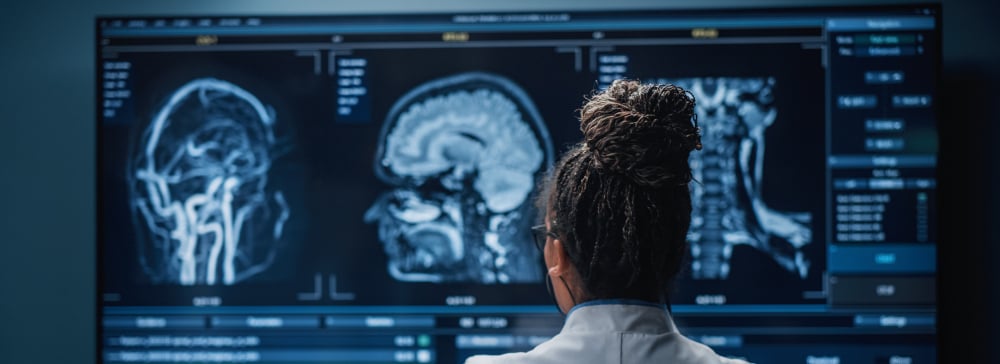Table of Contents

Traumatic brain injuries are defined as damage to the living brain tissue by external mechanical forces or motion and are characterized by a period of altered consciousness such as amnesia or coma that can last for minutes or stay indefinitely.
If you have sustained any of the types of brain injuries in Boynton Beach consult an accomplished injury lawyer from Kogan & DiSalvo. With the stakes so high, you need a determined brain injury lawyer on your side who can work hard to try and achieve the best possible outcome for you.

The types of brain injuries in Boynton Beach can vary, and may include closed brain injuries, open brain injuries, and traumatic.
Closed brain injuries are defined as acceleration of the head and rapid deceleration or collision with another object such as the windshield of a car which results in damage to the brain tissue by the violent smashing, shaking, stretching and/or twisting of the brain tissue.
An open brain injury, which is also considered a penetrating brain injury, occurs when an object such a bullet or a knife fractures the skull and enters the brain and injures the tissue in the process.
An acquired brain injury is when an individual experienced normal growth and development and sustained injuries to the brain that resulted in the impairment of brain function. This might cause swelling, bleeding, and deprivation of oxygen.
The primary traumatic brain injuries are what immediately result from the initial trauma. Examples include contusions, damage to the blood vessels and axonal shearing which is the stretching and tearing of the axons of the neurons which comprise the brain tissue.
The secondary traumatic brain injuries are the direct result of the initial trauma and the effects of processes initiated by the initial trauma. Diminished blood flow, swelling, brain abscess, and increased pressure within the skull are some examples of secondary traumatic brain injuries.
Doctors are able to distinguish from the types of traumatic brain injuries by means of thorough physical exams; different types of imaging such as CT scans, MRI and x-ray; utilization of the Glasgow Coma Scale; and various neurological, physical and cognitive tests.

Of the types of brain injuries in Boynton Beach, both primary and secondary traumatic brain injuries can result in long-term or permanent neurological and/or psychological conditions. The resulting abnormalities take a long time to fully manifest and present. Thus, the treatment protocols may be modified many times in order to comprehensively address the full scope and spectrum of a traumatic injury sustained by an individual.
Patients must understand the type of brain injury they have so they may fully explore all of their options for treatment, as well as have realistic expectations for their recovery process; short and long-term limitations and modifications that need to be made in their lives in order to accommodate their altered reality.

Treatment differs between types of traumatic brain injuries, degrees of injury and also the individual. Different people with the exact same injuries respond to various treatments in all different ways.
Depending on the type of traumatic brain injury, brain surgery may be required, temporary or long-term drains taking place, portions of the skull may be removed; there may be brain tissue damage; neurological intervention may be necessary, and even psychological intervention may be necessary.
Cognitive education could become important as well as occupational education and therapy. There are just numerous types and combinations of treatment available for traumatic brain injury, and a skilled medical and legal team is imperative when determining best options for medical treatment as well as mitigating future obstacles. Future obstacles might be financial, psychological, physical, et cetera; and fighting for recovery to sustain such obstacles and any expense down the road, is the job for the lawyers.

A catastrophic injury lawyer from Kogan & DiSalvo will have a working knowledge of these types of brain injuries in Boynton Beach, the treatment required, treatment available, the types of medical care professionals needed in the overall treatment plan, the long-term prognosis; possibilities and potential setbacks in the recovery and healing process.
Our attorneys have a thorough understanding of the laws and how they apply in the case of a catastrophic injury; all potential negligent parties to whom recovery is legally possible; the statutes of limitations pertaining to such claims; and the financial minimums and/or maximums that may pertain to a particular catastrophic injury case. We know the processes and procedures of filing such claims and the proper courts with whom the claims are filed.
If you are injured and unable to come to us,
our attorney will come to you - there is no charge for us to do so.